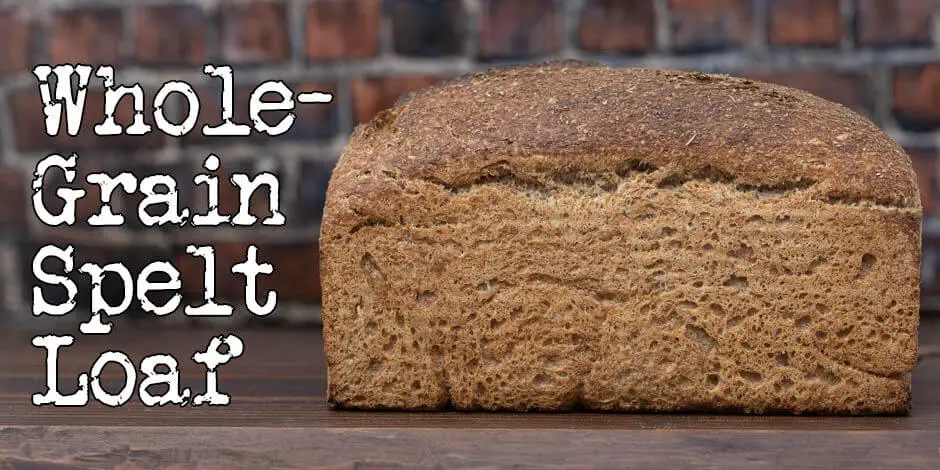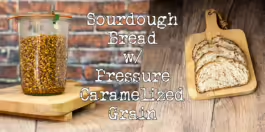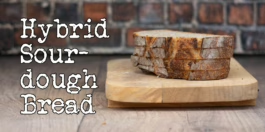You love bread but worry that you may be overeating the good stuff like most others. Staying healthy is all about moderation, variety, and getting your fiber. An excellent source of fiber is whole grains, plus they have lots of minerals and vitamins that are good for you, but whole-grain bread? It’s that hard, tough stuff that tastes like cardboard, right? Well, not if done right. Using spelt gives it outstanding nutty notes and a perfect sandwich crumb. This is my recipe for a whole-grain sourdough spelt loaf.
I have many recipes with spelt flour, and I like it, but this is the first time I’ve ever tried to make a recipe with whole bread using spelt—not just regular spelt flour, but coarse whole grain. I was surprised at what a great bread you can produce using this. It’s not at all like the whole-wheat stuff our Moms tried to get us to eat when we were kids.
If you are just here for the recipe, you can press the button underneath to be automagically transported to the recipe:
Jump to Recipe Jump to VideoIs spelt flour healthy?
In short, yes. But like any other flour, it should be consumed mainly whole grain for full health benefits.
It’s not very different from modern wheat nutritionally. It’s high in carbohydrates and fiber and has a reasonable amount of gluten.
About 80% of the protein in the flour is made of glutenin and gliadin, which are the proteins that form a gluten network when they are hydrated. So spelt isn’t suited for people with gluten intolerance, Coeliac disease, or wheat allergy.
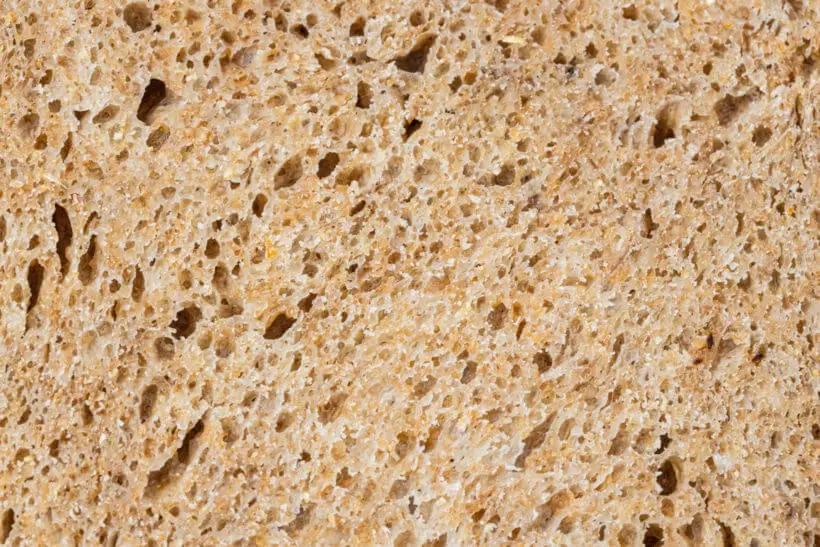
People with Irritable Bowel Syndrome need to eat food with a low amount of FODMAPs and can normally not eat bread, but they can eat bread that has been fermented for a long time, like sourdough, because it breaks down the FODMAPs.
I designed this bread with 100% whole grains, long fermentation, and a delicious taste so that you can eat bread without feeling guilty—although eating should never make you feel guilty.
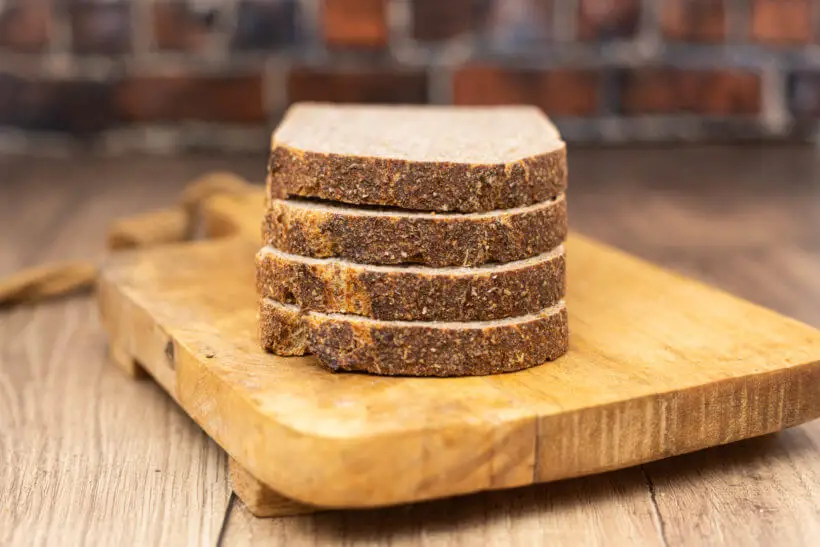
The dough in this sourdough spelt loaf recipe
Vitals
| Total weight | 1385 grams |
| Pre-fermented flour | 6.3% |
| Hydration | 75.0% |
| Yield | 1 large loaf |
The dough
The dough is made with 100% coarse whole-grain spelt flour. I use one from Kornby Mølle with some of the most amazing flours I’ve ever tasted. You’ll have to find your own unless you live in Denmark, though.
The salt content is 2%, which brings the sweet and nutty flavors of the spelt flour.
| Weight | Ingredient | Baker's Percentage |
|---|---|---|
| 750g | whole-grain spelt flour | 100% |
| 550g | water | 73.3% |
| 15g | salt | 2% |
| 100g | starter (100% hydration) | 13.3% |
The hydration is 75%, which is high for a spelt bread; if you plan to replace the whole grain with sifted spelt flour, you should probably stay at 70%.
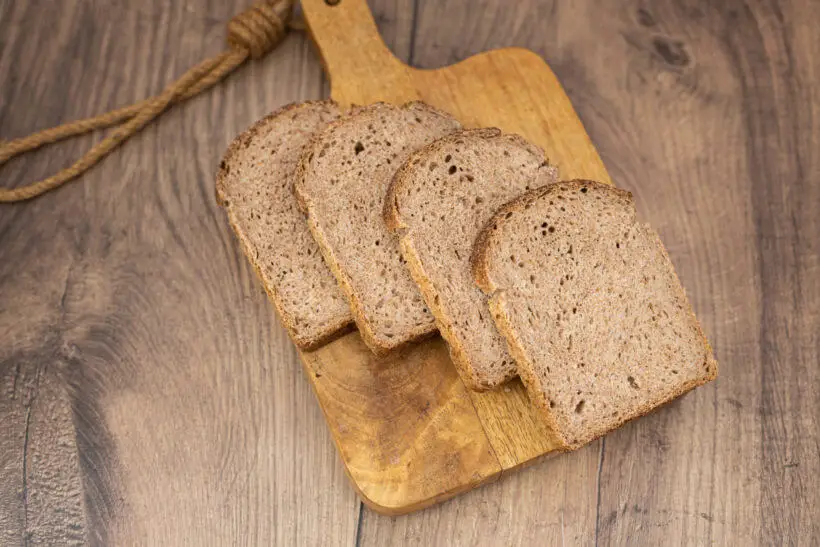
If you want to play around with the formula and change the quantity, weight, hydration, or amount of starter, you can do so here in my Bread Calculator.
The conclusion of this sourdough spelt loaf recipe
So, what I set out to do when I created this recipe was the following:
- Lots of whole-grain, preferably 100%.
- Use spelt instead of whole-grain wheat because the wheat can be very bitter and off-putting for many people.
- A great crust and a wonderfully soft crumb make this bread great for sandwiches—a perfect weekday bread.
This bread has a wonderfully delicious taste, sweet and nutty but not bitter. Its flavor isn’t overpowering, so it can be paired with any topping of your choosing.
The crumb is soft and tight, making it very suitable for sandwiches. The crust is not tough and crunchy like regular sourdough bread, but it gives you a satisfying chew.
It delivers everything it sets out to, and it will be on my weekly schedule. I think it could be on your schedule, too.
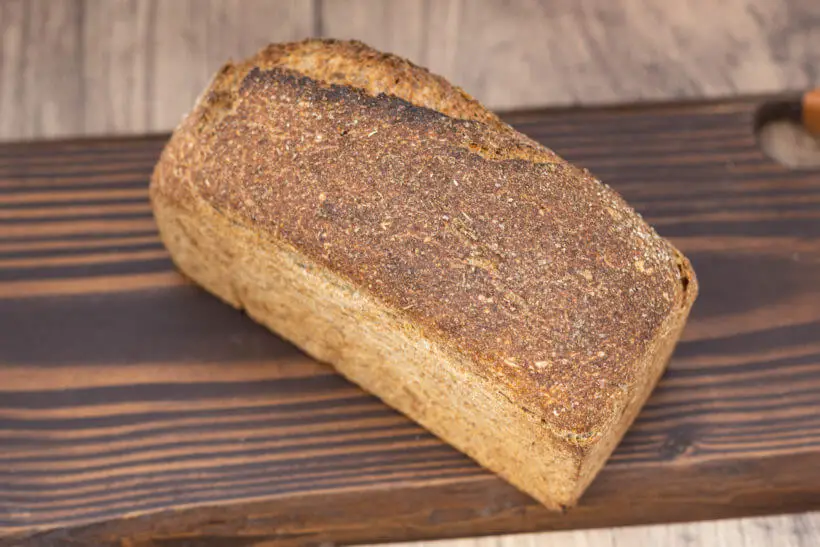
Please share this recipe for sourdough spelt loaf on social media
This is my recipe for a sourdough spelt loaf. If you like the recipe, please consider sharing it with like-minded bread lovers on social media.
If you make it and post it on Instagram, please tag me as @foodgeek.dk so I can see it. That would make me very happy.
Ad links! The links for equipment and ingredients in this recipe are affiliate links, which means I will receive a commission if you purchase the product.
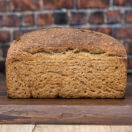
Sourdough Spelt Loaf
Equipment
Ingredients
- 750 g spelt flour extra coarse
- 550 g water
- 15 g salt
- 100 g sourdough starter
Instructions
Mix the dough
- To a medium bowl add: 750g whole-grain coarse spelt flour and 15g salt.
- Mix them together with your hands.
- Then add: 100g sourdough starter, fed and grown to its peak and 550g room temperature water.
- If low FODMAP is essential to you, you should use a spelt starter; otherwise, any kind will be acceptable.
- Mix the dough with your hands.
- Cover and leave to rest for an hour to develop the gluten.
Bulk fermentation
- Do three sets of stretch and folds spaced out by 30 minutes.
- Then put the dough in a see-through container with straight sides and level the top of the dough.
- Mark the top of the dough and where your dough has finished fermenting. If you don't mind the dough cracking during baking, go for 50% growth; if you prefer an even top, go 100%.
Pre-shape
- When the dough has grown, remove it from the container and let it fall out onto the kitchen counter. Prepare a dish towel with some whole-grain spelt flour on top.
- Then shape the dough into a ball using your bench scraper, or you can even use your hands. Let the dough rest on the counter for 20 minutes.
Final shape
- Then grab your pan and spray it with some baking spray.
- Flip the dough over and tease it out to a square. Fold up the bottom to about the middle.
- Fold each side over the other, then roll the top. It doesn’t have to be super tight.
- Grab the dough, flip it over with your hands, and roll it in the flour so that the top gets covered in flour.
- Then flip it over again and add it to the pan. Then cover it, and let the dough final proof.
Final proof
- You can choose to do a warm final proof described in the rest of this section, or you can proof it cold for at least 8 hours but up to 48 hours.
- It should pass the poke test, which means if you poke the dough with a wet finger, the hole should fill in slowly and leave a slight indentation.
Baking
- When you start to see signs of the dough being ready, heat your oven to 230°C/450°F with a pan at the bottom you can use for steaming. Use fan-forced or convection.
- When the dough is ready to bake, boil a kettle of water and add the dough to the oven.
- Pour the kettle of water into the pan, and turn the oven down to 210°C/425°F.
- Bake for 20 minutes, remove the steaming pan and bake for another 25 to 30 minutes.
- Remove the bread from the pan and bake for another 5 minutes to give the sides some color.
- Remove the bread from the oven and let it cool on a wire rack until the center is room temperature. It takes at least a couple of hours.



